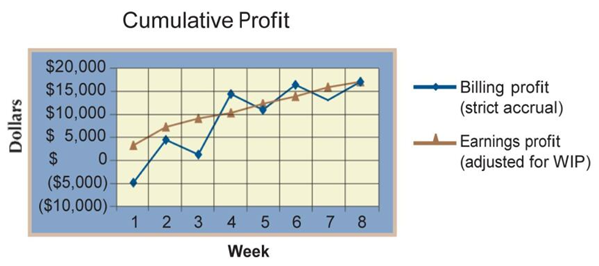 Work-In-Progress Provides Visibility, Timing, and Precision
Work-In-Progress Provides Visibility, Timing, and Precision
It can be tempting to focus on the job at hand and let the work just speak for itself. Tracking your architecture or engineering firm’s work in progress (WIP) can seem like an extra step that will take away from getting actual work done, but without keeping tabs on project milestones there is no insight into how the company is performing. Without tracking progress, there is no visibility into whether a project is on schedule and there is no way to calculate quickly and accurately how you are doing against budget.
What WIP Actually Does
Staying on track to complete a job when promised is not easy, but it certainly does not get easier by foregoing analytics. There are many moving parts that need to be timed correctly like ordering materials so they arrive on time and making sure bills are paid to keep projects running without interruptions or delays. WIP is an essential component that accurately calculates the progress of all ongoing work in real time and generates reports so project managers can proactively coordinate their budgets.
Reliable WIP reporting can help determine the effective hourly rate for a job and other important big picture perspectives. Proper WIP data collection can generate reports to keep track of expenses in real time for bills, invoices, purchase orders or work orders that are fully integrated with other essential aspects of accounting such as payroll, accounts payable and accounts receivable.
Less Volatility: Understand Overbilling or Underbilling
Maintaining WIP can be a useful tool to help adjust revenue streams to avoid either overbilling or underbilling. Overbilling, while good from a cashflow perspective, can be particularly concerning from a financial reporting perspective since it can show income for work that has not been completed which can distort future decisions and lead to overspending.
How do you determine if you are over or under billing? You can follow the steps below to calculate your project WIP.
- Actual Costs to Date ÷ Revised Estimated Costs = Percentage of Work Completed
- Percentage of Work Completed x Total Estimated Revenue = Earned Revenue
- Billed to Date – Earned Revenue = Overbilled (When Positive +) or Underbilled (When Negative –)
Architecture and engineering firms that calculate WIP benefit from a steady reported revenue stream while those who do not use WIP in favor of invoice-only models experience greater unpredictability and volatility in their revenue as shown in the graph below.

Images courtesy of The Journal of Light
The billing profit model shows a greater fluctuation in cumulative profits week to week, whereas the earnings profit model that is adjusted for WIP is consistent and smooth throughout the end of the period.
An architecture or engineering firm’s ability to determine its own financial health depends on WIP reporting—not just a gut feeling. In the absence of a proper WIP report, it is possible to be behind schedule and over budget without even knowing. In this state, it is impossible to tell whether a company is growing or not and makes it harder to see when or where improvements are needed.
Get Better Accuracy and Consistency with WIP
Architecture or engineering firms that still do not use WIP for more accurate accounting is the equivalent of not using a measuring tape or a leveler on the job site. It might be possible to get the job done without such a seemingly insignificant tool, but it will not be as accurate as it could be. Investing in the right accounting software can be the difference between measuring a foot with a shoe and a standardized ruler.
Continue the Conversation
Clayton & McKervey’s new at-a-glance service offers real-time updates on project progress so firms can stay on top of their budgets and even identify problems before they affect job progress. Contact us today to learn more.






